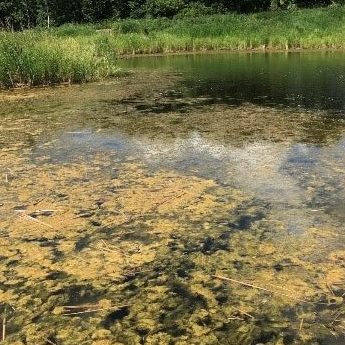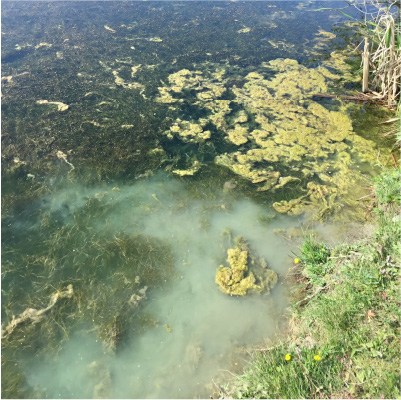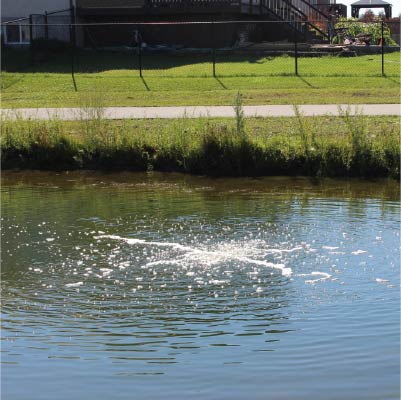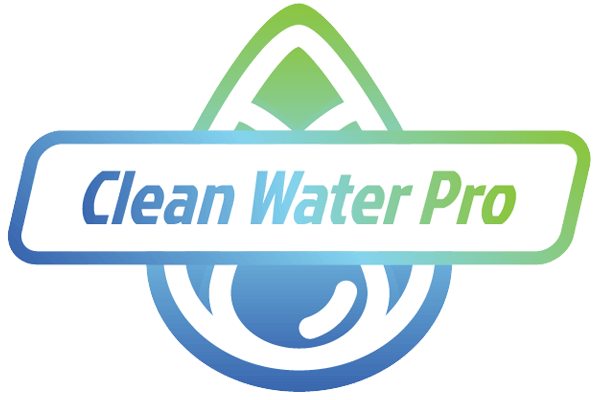
How Does Eutrophication Affect Dugout Ponds, Retention Ponds, and Lakes?
The eutrophication of ponds is the process by which excess nutrients, such as nitrogen and phosphorus, cause algae to grow in water. Eutrophication and its accompanying algal blooms can lead to decreased water clarity, which may be undesirable for many reasons.
This article will discuss eutrophication, how it happens, and what you can do about it.
What Is Eutrophication?
Eutrophication is a process that occurs when water bodies, such as ponds, lakes, and rivers, receive an excess of nutrients, primarily nitrogen and phosphorus. These nutrients often come from external sources like agricultural runoff, wastewater discharge, and stormwater runoff. When these nutrients accumulate in a water body, they stimulate the overgrowth of algae and aquatic plants.
Plants and animals need these nutrients to survive. However, when these plants and algae die, their decomposition consumes oxygen in the water. This reduction in oxygen levels can create hypoxic (low oxygen) or anoxic (no oxygen) conditions, which are detrimental to aquatic life.
The water body can also experience other negative changes, such as unpleasant odours, the appearance of fish kills, and the proliferation of certain toxins produced by some algae, potentially making the water unsafe for recreational uses.

How Does Eutrophication Happen?
Two factors determine nutrient levels in a dugout pond, retention pond, or lake:
1) The rate at which nutrients enter the pond;
2) The rate at which those nutrients are used in or leave the pond.
This balance between nutrient input and removal determines whether a water body becomes eutrophic or not if the nutrient input rate exceeds the nutrient removal rate.
Human activities most often cause eutrophication. These activities include:
- Overfertilization of crops
- Runoff from land into streams and rivers
- Excessive use of fertilizers on lawns and gardens
- Discharge of untreated wastewater
- Use of pesticides
- Pollution of stormwater runoff
- Leaching of chemicals from agricultural fields
- Inadequate management practices
- Uncontrolled animal waste
- Changes in climate
The above list does not cover all possible sources of nutrient inputs. Some of the listed activities reduce nutrient levels in the pond. Therefore, it is important to understand the origin of nutrient inputs before attempting to control them.
Why Should You Care About Eutrophication?
If you have ever visited a lake or pond, you know it is beautiful. But if you look closely, you might see something else – algae!
Algae are organisms that live only in water. They can take in large amounts of sunlight and make food using photosynthesis.
If you notice greenish-brown patches floating on the surface of your pond, you may have noticed that the algae population is increasing. Excessive algae growth or algal blooms could indicate that your pond is becoming eutrophic.
A healthy pond should contain enough organic matter to support a diverse aquatic life community. A diverse community includes many different types of fish, amphibians, reptiles, birds, and invertebrates.
Unfortunately, as the number of algae increases, so does the competition among species for food. As a result, fewer species remain in the pond.

What Are Signs That Your Pond May Be Becoming Eutrophic?
Several signs indicate that your dugout pond, retention pond, or lake may become eutrophic. Here are some examples:
- Increased growth of algae
- Decreased numbers of fish
- Reduced diversity of plant and animal life
- Deterioration of shoreline
- A decrease in dissolved oxygen content
- An increase in nitrates (a form of nitrogen)
- An increase in phosphates
- A change in the colour of the water
- A difference in the clarity of the water
When you see any of these signs, you should contact your local water remediation agency to determine how to prevent further damage.
Is There Anything You Can Do To Prevent Eutrophication?

Eutrophication, over time, alters the physical characteristics of ponds. The most common consequence of a eutrophic pond or lake is increased algal growth and reduced dissolved oxygen levels in the water.
Reversing the effects of eutrophication can be difficult once they occur. However, you can still take action to transform a eutrophic dugout pond, retention pond, or lake into a beautiful water body. There are also proactive measures to prevent eutrophication from happening.
Installing and maintaining an effective fine bubble water aeration system is the first step when remediating a eutrophic water body. Water aerators circulate and increase the dissolved oxygen level in the water, which is necessary for depleted dissolved oxygen levels from algal blooms. We recommend installing a fine-bubble water aeration system because of its effectiveness and energy efficiency.
Implementing a beneficial bacteria treatment plan is the second step in remediating a eutrophic water body. Beneficial bacteria are environmentally-friendly pond treatments naturally found within water. Our water experts at Clean Water Pro recommend the following:
Fine bubble water aeration combined with beneficial bacteria, these treatments will clear the water column, reduce muck levels, bind the phosphorous, and reduce the sunlight aquatic plants use. Water aeration and beneficial bacteria are the easiest ways to balance nutrients and make pond management a breeze.
The last thing you should do is limit the amount of debris entering the pond. Debris can be grass clippings, fallen leaves, and runoff. You can prevent grass clippings by using a lawnmower bag or cutting a distance from the pond’s edge. Use a pond net to catch leaves before entering your pond. Lastly, grow a healthy riparian zone to minimize runoff from entering your pond.
How Does Eutrophication Impact Fish?
Fish are sensitive to changes in the environment. Fish tend to move away from the area when the water becomes more alkaline.
When the pond is eutrophic, the fish will not eat well because the algae compete with them for food. In addition, the increased presence of algae reduces the amount of light available to the fish.
Moreover, the algae produce toxins that accumulate in the tissues of the fish. These toxins can lead to death if the fish consume them.
The Bottom Line
The imbalance between the amount of nutrients in the water and the number of organisms consuming those nutrients causes eutrophication in ponds and lakes.
Higher amounts of nitrogen and potassium can trigger algal blooms, causing the pond to become more alkaline and less hospitable to other organisms. These factors create a snowball effect, making your pond increasingly difficult to remediate.
We believe in a proactive approach. If you have a pond or lake, you must take steps to prevent this problem. Maintain a healthy balance between nutrients and organisms in the water.
